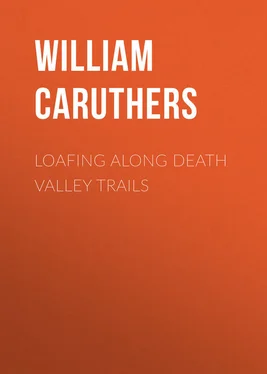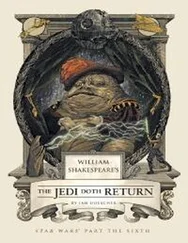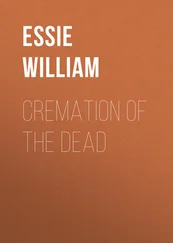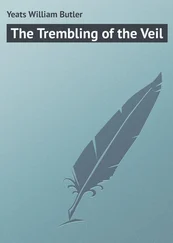William Caruthers - Loafing Along Death Valley Trails
Здесь есть возможность читать онлайн «William Caruthers - Loafing Along Death Valley Trails» — ознакомительный отрывок электронной книги совершенно бесплатно, а после прочтения отрывка купить полную версию. В некоторых случаях можно слушать аудио, скачать через торрент в формате fb2 и присутствует краткое содержание. Жанр: foreign_language, foreign_prose, на английском языке. Описание произведения, (предисловие) а так же отзывы посетителей доступны на портале библиотеки ЛибКат.
- Название:Loafing Along Death Valley Trails
- Автор:
- Жанр:
- Год:неизвестен
- ISBN:нет данных
- Рейтинг книги:5 / 5. Голосов: 1
-
Избранное:Добавить в избранное
- Отзывы:
-
Ваша оценка:
- 100
- 1
- 2
- 3
- 4
- 5
Loafing Along Death Valley Trails: краткое содержание, описание и аннотация
Предлагаем к чтению аннотацию, описание, краткое содержание или предисловие (зависит от того, что написал сам автор книги «Loafing Along Death Valley Trails»). Если вы не нашли необходимую информацию о книге — напишите в комментариях, мы постараемся отыскать её.
Loafing Along Death Valley Trails — читать онлайн ознакомительный отрывок
Ниже представлен текст книги, разбитый по страницам. Система сохранения места последней прочитанной страницы, позволяет с удобством читать онлайн бесплатно книгу «Loafing Along Death Valley Trails», без необходимости каждый раз заново искать на чём Вы остановились. Поставьте закладку, и сможете в любой момент перейти на страницу, на которой закончили чтение.
Интервал:
Закладка:
“It is common practice … to gamble away their wives and children… A husband will prostitute his wife to a stranger for a trifling present.” (Ibid. ch. 4, Vol. 1.)
“Our Piute has a peculiar way of getting a foretaste of connubial bliss – cohabiting experimentally with his intended for two or three days previous to the nuptial ceremony, at the end of which time either party can stay further proceedings to indulge further trials until a companion more congenial is found.” (S. F. Medical Press, Vol. 3, p. 155. See also, Lewis and Clark’s Travels, p. 307.)
“The Piutes are the most degraded and least intellectual Indians known to trappers.” (Farnham’s Life, p. 336.)
“Pah-utes are undoubtedly the most docile Indians on the continent.” (Indian Affairs Report, 1859, p. 374.)
“Honest and trustworthy, but lazy and dirty,” is said of the Shoshones. (Remi and Brenchley’s Journal, p. 123.) Some ethnologists declare they cannot be identified with any other American tribe.
Wives were purchased, cash or credit. Polygamy prevailed. Unmarried women belonged to all, but Gibbs says women bewailed their virginity for three days prior to marriage. “They allow but one wife.” (Prince in California Farmer, Oct. 18, 1861.)
Husbands were allowed to kill their mothers-in-law. The heart of a valiant enemy killed in battle was eaten raw or cut into pieces and made into soup. Women captives of other tribes were ravished, sold or kept as slaves. Some Southern California tribes sold their women and occasionally tribes were found without a single squaw.
“They are exceedingly virtuous.” (Remi and Brenchley’s Journal, Vol. 1, pp. 1-23-8.)
“Given to sensual excesses.” (Farnham’s Travel, p. 62.)
“The Nevada Shoshones are the most pure and uncorrupted aborigines on the continent … scrupulously clean … chaste.” (Prince, California Farmer, Oct. 18, 1861.)
Thus the Indian who came or was driven to this wasteland evoked conflicting opinions and the real picture is vague.
The lowest of California Indians is believed to have been the Digger, so-called because he existed chiefly upon roots and lived in burrows of his own making, but his isolation by ethnologists is not convincing. He was found around Shoshone by Fremont and Kit Carson and inhabited valleys to the north and west, but in the Death Valley region the Piute and Shoshone were dominant.
Blood vengeance was deep-rooted. Found with the Indian collection of Dr. Simeon Lee at Carson City was a revealing manuscript that tells how swiftly it struck.
Mudge rode up to another Indian standing on a Carson City street and without warning shot him dead and galloped away. The dead man had two cousins working at Lake Tahoe. The murder had occurred at 9:30 a.m. and by some means of communication unknown to whites, they were on Mudge’s trail within two hours and had found him. Mudge promptly killed them both and fled again. Sheriff Ulric engaged Captain Johnnie, a Piute, to track the slayer. He found Mudge’s lair, but Mudge was a sure shot, well protected and to rush him meant certain death. The posse decided to keep watch until thirst or hunger forced him out. “Me fix um,” said Captain Johnnie.
He disappeared, but soon returned with an enormous amount of tempting food which he contrived to place within easy reach of Mudge. “Him see moppyass (food). Eat bellyful and fall down asleep.”
That is exactly what happened and old Demi-John, the father of the murdered boys crawled stealthily through the sage and with his hunting knife severed the head from the sleeping Mudge’s body.
In Mono county Piutes killed the Chinese owner of a cafe and fed the carcass to their dogs. In court they blandly confessed and justified it, claiming the Chinaman had killed and pickled one of their missing tribesmen and then sold and served to them portions of the victim as “corned beef and cabbage.”
For the desert Indian life was raw to the bone. He was an unemotional, fatalistic creature as ruthless as the land. In the struggle to live, he had acquired endurance and cunning. He knew his desert – its moods, its stingy dole, its chary tolerance of life. He knew where the mountain sheep hid, the screw-bean grew and the fat lizard crawled. He knew where the drop of water seeped from the lone hill. He combed the lower levels of the range for chuckwalla, edible snakes, horned toads – anything with flesh; stuffed the kill into bags and preserved them for later use. He made flour from mesquite beans; stored piñons, roots, herbs in his desperate fight to survive, and anything that crawled, flew, or walked was food. I have seen a squaw squatted beside the carcass of a dog, picking out the firmer flesh.
When the Piute came to a spring, the first thing he did was to look about for a flat rock which he was sure to find if a member of his tribe had previously been there. Kneeling, he would skim the water from the surface and dash it upon this rock. Then he smelled the rock. If there was an odor of onion or garlic, he knew it contained arsenic and was deadly. Naturally, he would be concerned about another water hole. He had only to look about him. He would find partially imbedded in the earth several stones fixed in the form of a circle not entirely closed. The opening pointed in the direction of the next water. The distance to that water was indicated by stones inside the circle. There he would find for example, three stones pointing toward the opening. He knew that each of those stones indicated one “sleep.” Therefore he would have to sleep three times before he got there. In other words, it was three days’ journey.
But which of these trails leading to the water should he take? There might be several trails converging at the water hole. The matter was decided for him. He walked along each of those trails for a few feet. Beside one of them he would find an oblong stone. By its shape and position he knew that was the trail that led to the next water.
Under such circumstances a man would perhaps wonder if upon arrival at the next water hole he would find that water also unfit to use. The information was at hand. If, upon top of that oblong stone he found a smaller stone placed crosswise and white in color, he knew the water would be good water. If a piece of black malpai was there instead of the white stone, he knew the next water would be poison also.
Not infrequently he would find other information at the water hole if there were boulders about, or chalky cliffs upon which the Indian could place his picture writing. If he saw the crude drawing of a lone man, it indicated that the land about was uninhabited except by hunters, but if upon the pictured torso were marks indicating the breasts of a woman, he knew there was a settlement about and he would find squaws and children and something to eat.
Frequently other information was left for this wayfaring Indian. Under conspicuous stones about, he might find a feather with a hole punched through it or one that was notched. The former indicated that one had been there who had killed his man. The notch indicated that he had cut a throat.
Since there was a difference between the moccasins of Indian tribes, the dust about would often inform him whether the buck who went before was friend or enemy.
Like all American aborigines, the Piute had his medicine man, but the manner of his choosing is not clear. The one selected had to accept the role, though the honor never thrilled him, because he knew that when the score of death was three against him he would join his lost patients in the happy hereafter. Occasionally he was stoned to death by the relatives of the first lost patient and with the approval of the rest of the tribe. Not infrequently it was believed the medicine man’s departed spirit then entered the medicine man’s kin and they were also butchered or stoned to death.
Читать дальшеИнтервал:
Закладка:
Похожие книги на «Loafing Along Death Valley Trails»
Представляем Вашему вниманию похожие книги на «Loafing Along Death Valley Trails» списком для выбора. Мы отобрали схожую по названию и смыслу литературу в надежде предоставить читателям больше вариантов отыскать новые, интересные, ещё непрочитанные произведения.
Обсуждение, отзывы о книге «Loafing Along Death Valley Trails» и просто собственные мнения читателей. Оставьте ваши комментарии, напишите, что Вы думаете о произведении, его смысле или главных героях. Укажите что конкретно понравилось, а что нет, и почему Вы так считаете.












